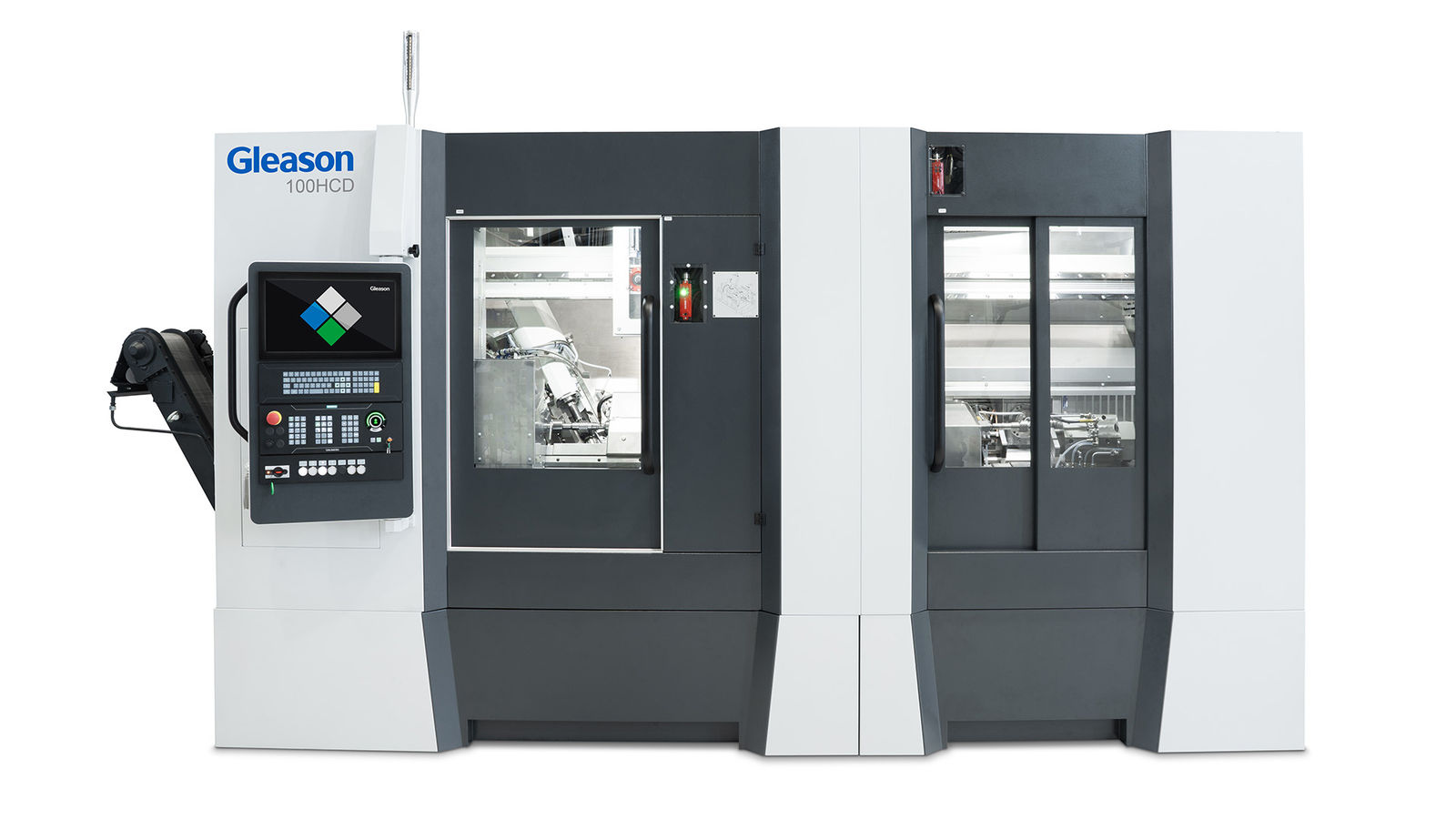Radial Chamfering Arrives for E-Drive Gears
Horizontal hobbing makes an ideal solution for geared shafts with interfering contours, including EV transmission shafts
Manufacturers of EV drive systems are leaving no stone unturned in their quest for quiet-running, dependable transmission gears and shafts. Where once chamfering and deburring operations were almost an afterthought, they’re now considered a primary soft machining process, with widespread recognition that anything less than a flawless tooth flank can result in premature transmission failure, less-than-optimal efficiency, and unacceptable noise.

The 100HCD is designed for a wealth of geared profiles up to a workpiece diameter of 120 mm, module 4, and a shaft length of 450 mm.
Gleason has been comprehensive in its pursuit of new chamfering technologies that can be more easily, and economically, integrated into the gear manufacturing processes, whether to produce smaller automotive gears, pinions, and shafts, or larger gears for trucks and tractors. In every instance, these new technologies have been combined with proven horizontal or vertical hobbing machines so that the chamfering operation can be performed with minimal impact on cycle times and tool cost per piece. One such example was the recent introduction of the vertical Genesis 280HCD gear hobbing machine, which combines two chamfering processes: chamfer hobbing, ideal for high volume automotive and light truck applications, including final drive ring gears and shafts; and fly cutter chamfering, delivering exceptional flexibility for lower volume, small lot jobber applications. Both are performed in parallel to the hobbing operation.
Introducing the New 100HCD
Now, Gleason has a solution for smaller e-drive transmission gears, pinions, and shafts that require both production in high volumes, and the cutting of precise, repeatable chamfers. With the introduction of the 100HCD horizontal hobbing machine allowing radial chamfering in parallel with hobbing, the platform is ideally suited to meet the challenges posed by today’s very high precision, ultra-quiet e-drive transmission gears and shafts.
Background
The 100HCD is a variation on Gleason’s recently developed 100H horizontal hobbing machine—the next generation of the well-known P90 Series, with improvements in design, functionality, and operator interface. This new series, including variants such as the 100HCD, is designed to handle a wealth of geared profiles up to a workpiece diameter of 120 mm, module 4, and a shaft length of 450 mm. With design improvements to the hobhead and workspindle and the use of the Gleason GEMS human-machine interface (HMI), the 100 series delivers extremely fast cutting and processing times, making it a good match for the large batch production of gears and pinions. And like the P90 series, which integrated chamfering/deburring along with horizontal hobbing, the 100HCD also combines this new and improved hobbing platform with an integrated chamfering/deburring station.










